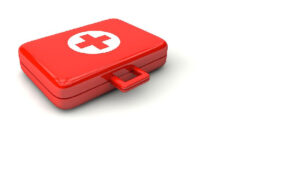
Custom medical equipment cases protect your fragile and expensive medical tools.
As the medical field has gotten more portable, fragile medical devices must be transported wherever they are needed. This might mean shipping out devices to in-the-field doctors and nurses or transporting devices via ambulance or helicopter in sometimes difficult conditions that may not guarantee the equipment will be safe from impact, weather or other hazardous environments. If you want to ensure that your medical devices and equipment are safely delivered to their destination, you should provide for an easy loadout and quick set-up. To accomplish this, the creation and use of custom medical equipment cases is essential. Packaging Strategies, Inc. has the expertise needed to help you determine the best case needed to carry your specific medical equipment. Our designs will allow your gear to withstand specific conditions that transit cases will experience. Read on to see what steps are needed to configure your best custom medical case.
Know What You’re Shipping
Medical equipment is very expensive and often just as sensitive. However, you shouldn’t avoid transporting the best medical equipment because it is sensitive, and you fear damaging it during transportation. As a medical professional, you want to ensure that your patients receive the best care regardless of the hazards, location or environment. This is why custom medical equipment cases are ideal: they allow you to ship valuable equipment without worrying about whether the equipment will make it to the destination. The use of custom foam cushioning for sensitive equipment is key for protecting items from impact shock and jostling during transportation.
This is why you must plan which items go into which medical cases. When you know the equipment that will be packaged together, you can start designing the custom foam that will provide precision protection and carefully cushion each item in the case. The precision molds softly hug the equipment which keeps it from moving around the case during shipment. This works far better than “one size fits all” foam, which your equipment may or may not fit into.
Know Where You Are Shipping Your Equipment
When your devices arrive at their destination, you want to make sure you can unload every device safely and with ease. You might also want to consider the unique needs of the destination, if any, and select a packaging solution that is safe, stable, and straightforward. For example, consider how the weather may impact your case. Will it be raining? Will there be a lot of sand or perhaps moisture or humidity? Factoring in these potential conditions can help you and your case designer find the best solution to keep medical equipment free from damage.
Creating custom foam cushions also helps ensure an easy unloading process, as your equipment will be exactly where it is supposed to be once opened.
Avoid Costly Mistakes
There are a few mistakes you can avoid when you work with a custom packaging company. Don’t purchase a lower-quality case just because you want to save money. When you purchase medical equipment, you are investing in the long-term use of those products. Buying a case that doesn’t protect your investment is ultimately more costly and harmful than spending a bit more upfront on a custom protective case.
You should also make sure to select a case that is prepared for numerous hazardous conditions. This way, you can use your custom medical equipment cases in numerous situations and get the most use out of these protective, durable transport cases.
DEPEND ON PACKAGING STRATEGIES FOR YOUR CUSTOM PACKAGING NEEDS
Packaging Strategies has assembled a team with over 80 years of experience in design, engineering, development, manufacturing, and sales. We created the Packaging Strategies Design and Technology Center to create and manufacture complete systems integration packages and container solutions of all sizes and materials for our clientele. Many of these clients are federal agencies or in the private sector. No matter what you need to carry, Packaging Strategies is sure to have the right case for the job. You can view our website here, and follow us on Facebook, Twitter, Flickr, and LinkedIn.
This entry was posted on Tuesday, January 3rd, 2023 at 11:16 am. You can follow any responses to this entry through the RSS 2.0 feed. You can leave a response, or trackback from your own site.